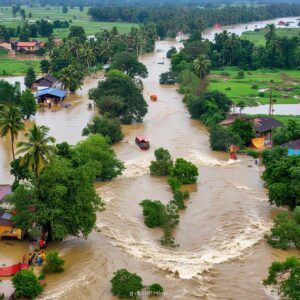 Introduction
Introduction
Disasters—both natural and man-made—are becoming more frequent and severe across the globe. Earthquakes, floods, hurricanes, wildfires, and pandemics cause immense damage to lives and infrastructure. In this scenario, technology in disaster management plays a vital role. From early warning systems to AI-driven analytics, modern tools are transforming how governments and organizations handle emergencies.
What Is Disaster Management?
Disaster management refers to strategies and processes aimed at reducing the risks and impacts of disasters. It involves four key phases:
-
Mitigation – Minimizing potential damage
-
Preparedness – Planning and training in advance
-
Response – Immediate action during disasters
-
Recovery – Restoring normalcy and rebuilding
Technology supports each phase, ensuring better coordination, faster response, and reduced loss of life.
How Technology Transforms Disaster Management
1. Early Warning Systems
Modern early warning systems use tools like:
-
Satellite imaging
-
IoT-based sensors
-
Seismic monitors
-
Weather prediction software
These systems help forecast natural disasters like floods, tsunamis, cyclones, and earthquakes. They allow communities to evacuate in time, reducing casualties.
2. Geographic Information Systems (GIS)
GIS technology helps map disaster-prone areas and provides real-time location data during emergencies. It is used for:
-
Evacuation planning
-
Risk assessment
-
Damage analysis
-
Resource allocation
GIS also integrates data from satellites and sensors to improve disaster response efficiency.
3. Artificial Intelligence (AI) and Machine Learning
AI in disaster management allows for:
-
Predictive modeling of disaster impact
-
Real-time data analysis
-
Automated resource allocation
-
Damage assessment from drone footage
-
Social media monitoring for SOS signals
AI enables faster, smarter decisions during emergencies.
4. Drones and Robotics
Drones (Unmanned Aerial Vehicles) are used for:
-
Surveying damaged areas
-
Search and rescue operations
-
Delivering medical supplies
-
Monitoring wildfires or floods
Robots are also deployed in dangerous environments like collapsed buildings or nuclear spill zones.
5. Mobile Technology and Communication Tools
Smartphones, apps, and communication platforms are essential for:
-
Broadcasting alerts and updates
-
Connecting victims with responders
-
GPS tracking and location sharing
-
Managing shelter and food distribution
Many governments use disaster communication apps to reach citizens instantly.
6. Big Data and Analytics
Big data helps gather and analyze information from:
-
Weather data centers
-
Social media platforms
-
Traffic systems
-
Health networks
Authorities use analytics to:
-
Forecast disaster trends
-
Plan evacuations
-
Monitor post-disaster disease outbreaks
-
Optimize emergency logistics
7. Blockchain for Transparency
Blockchain technology ensures transparency in aid distribution. It tracks donations and relief supplies, reducing fraud and ensuring resources reach intended beneficiaries.
Benefits include:
-
Secure transactions
-
Traceable donations
-
Better accountability
8. Virtual Reality (VR) for Training
VR and AR simulations are used to train disaster response teams. These simulations provide hands-on experience without real-world risk, making training more effective.
Uses include:
-
Earthquake drills
-
Fire evacuation simulations
-
Crisis management workshops
Real-World Examples
-
Japan uses seismic sensors and AI to detect earthquakes seconds before impact.
-
India employs GIS and mobile alerts for flood and cyclone management.
-
Australia utilizes drones for fire surveillance and rescue.
-
UN agencies use blockchain to manage relief funds in conflict zones.
Challenges in Adopting Technology for Disaster Management
Despite its benefits, implementing technology faces some barriers:
-
Lack of infrastructure in rural areas
-
High initial setup costs
-
Digital divide and accessibility issues
-
Data security and privacy concerns
However, increasing government and private sector involvement is bridging these gaps.
Future of Technology in Disaster Management
The future lies in:
-
Integrating AI with real-time data from IoT devices
-
Developing multi-language communication apps
-
Collaborating across borders for shared tech resources
-
Using 5G for faster emergency communication
-
Expanding cloud-based disaster recovery systems
Best Elements to Include in an SEO-Optimized Blog
To maximize reach and readability, include:
-
Meta title and description
-
Targeted keywords in headers and content
-
Internal and external links
-
Bullet points and visuals
-
Infographics on tech usage in disasters
-
Case studies
-
FAQ section for search intent
-
CTA (Call to Action) like “Explore disaster management courses” or “Download emergency preparedness guide”
Conclusion
Technology has redefined disaster management by making emergency preparedness smarter, response faster, and recovery more efficient. From AI and GIS to drones and blockchain, each innovation brings us closer to minimizing the impact of disasters. As threats grow more complex, investing in tech-driven solutions is not just smart—it’s essential.

